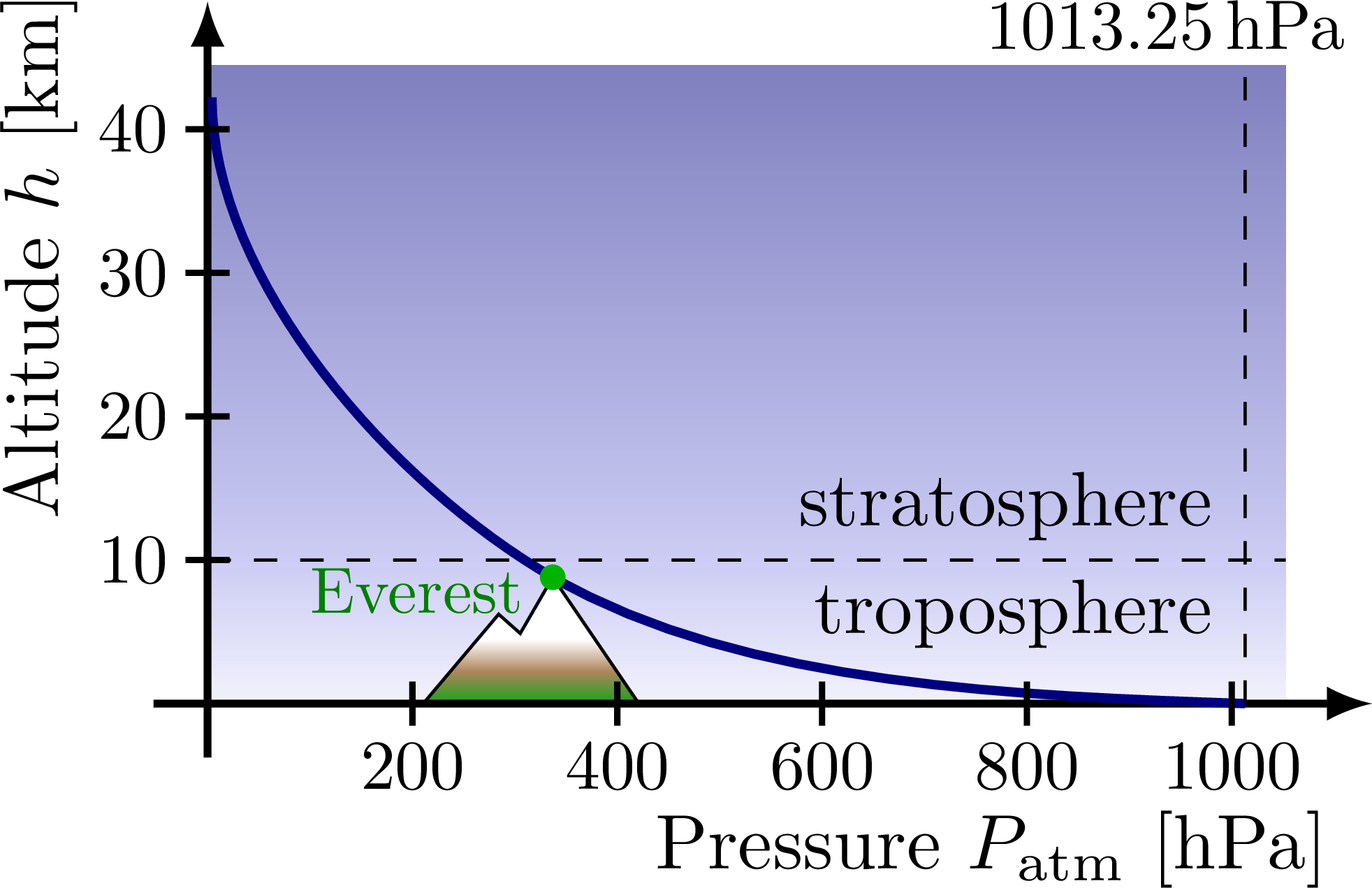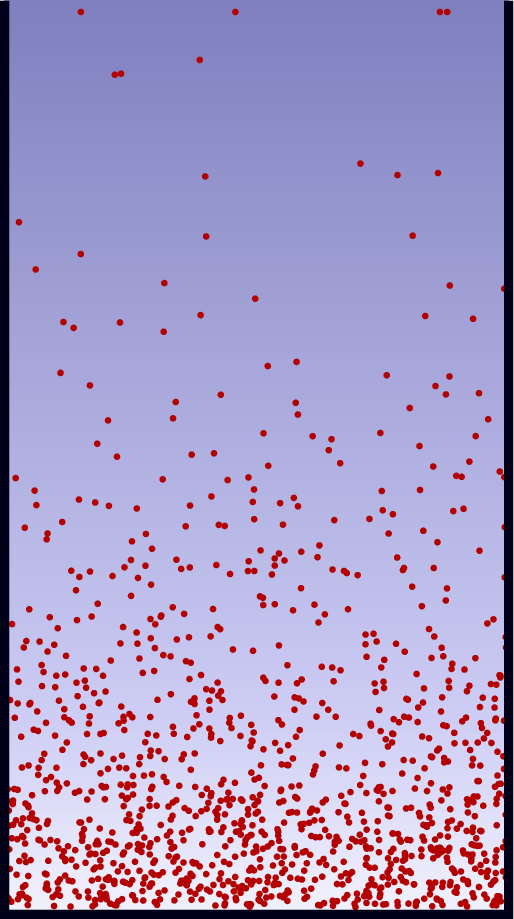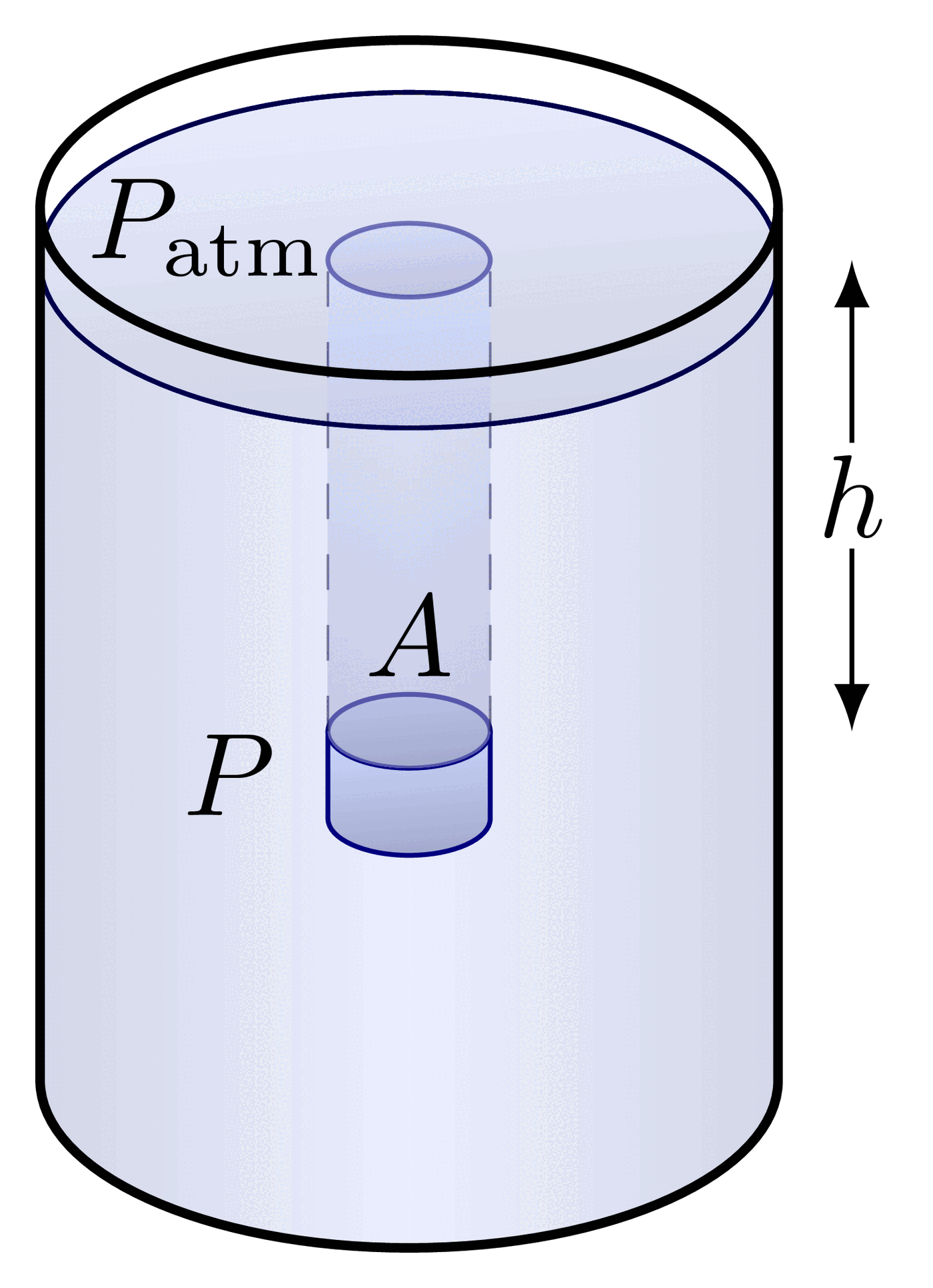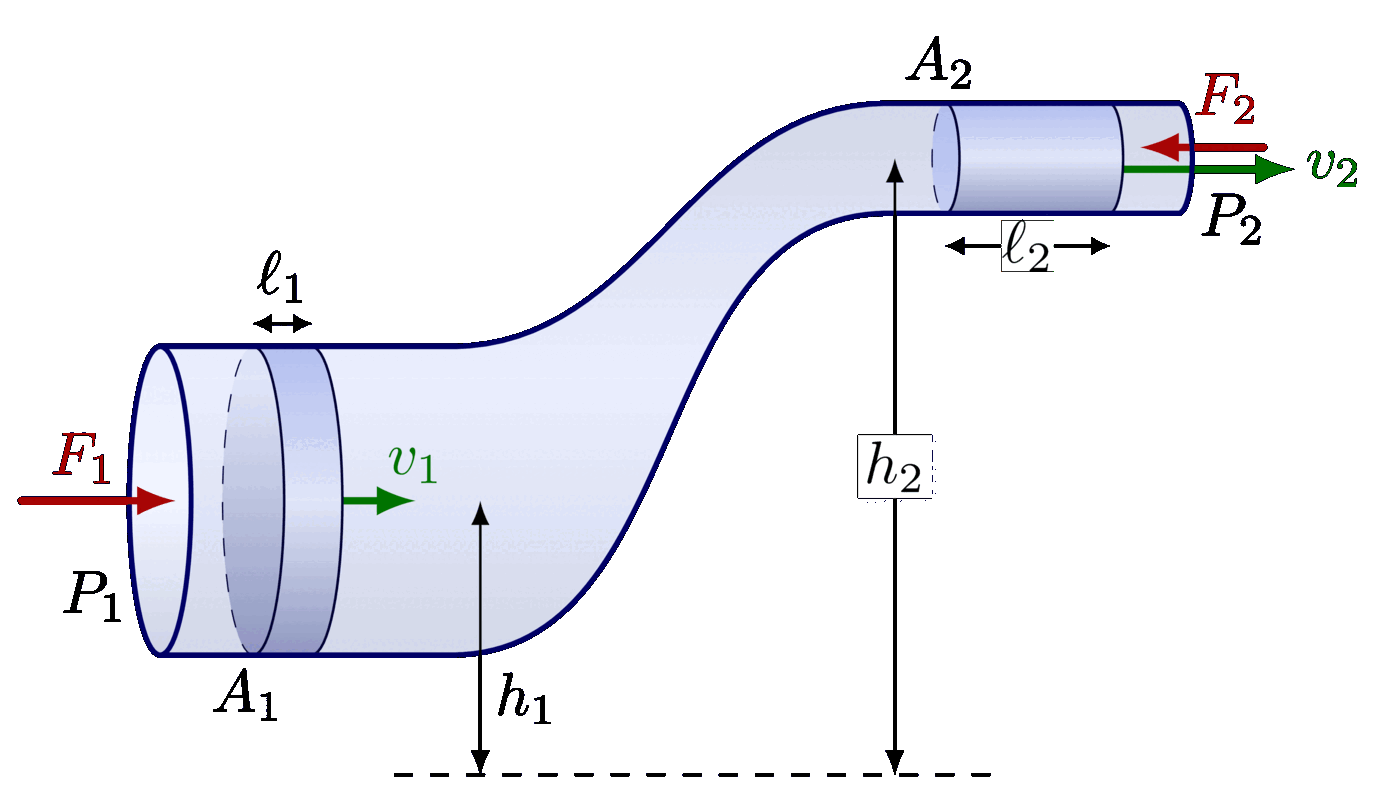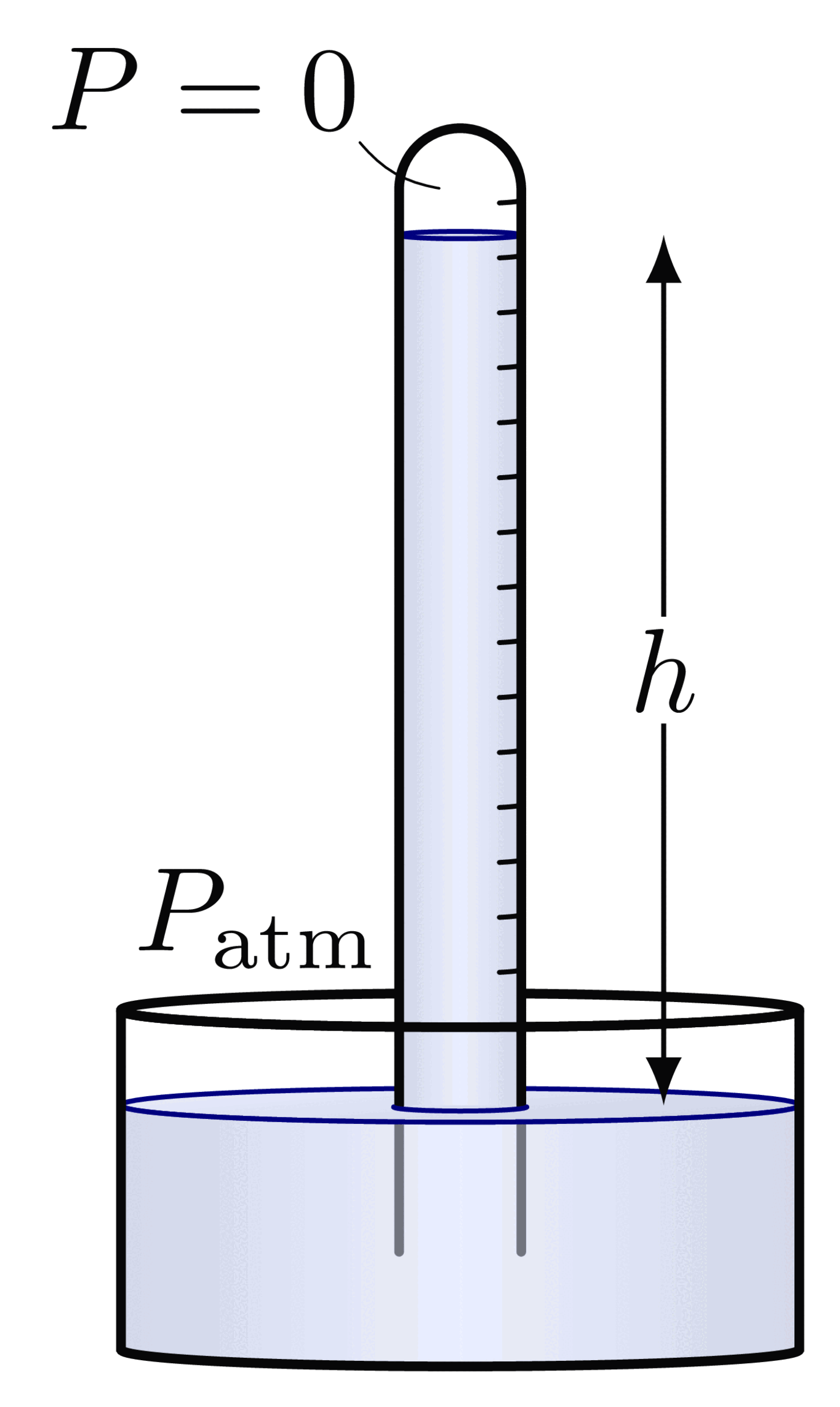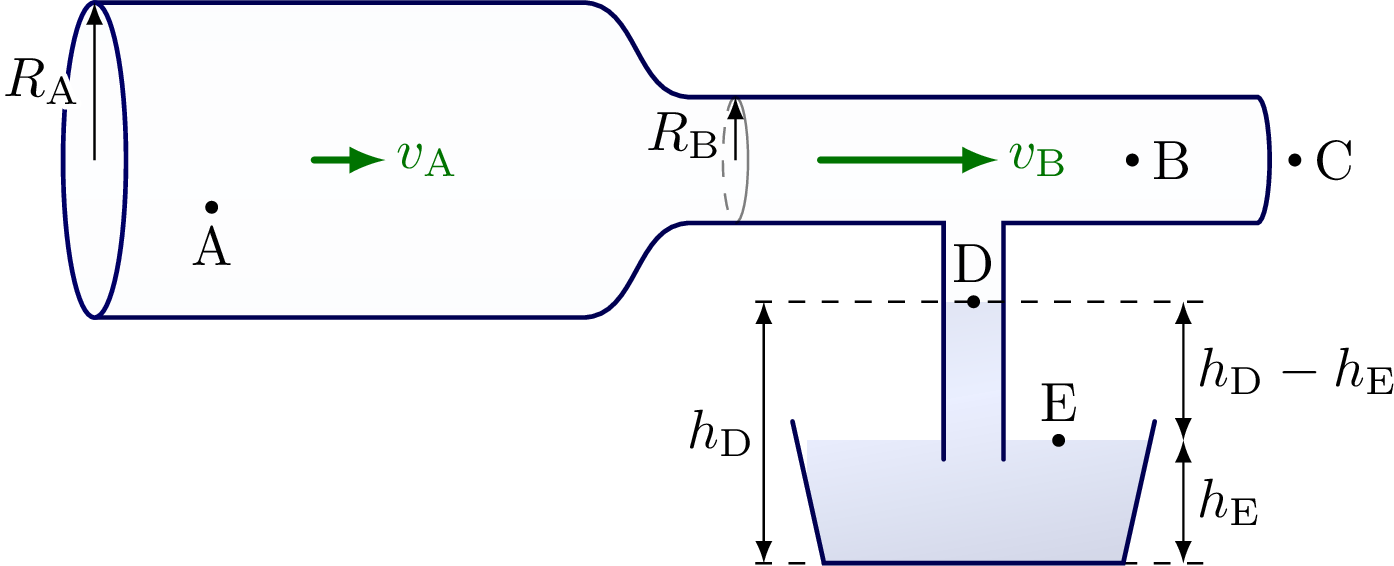The atmospheric pressure variation as a function of altitude.
Edit and compile if you like:
% Author: Izaak Neutelings (November 2020)\documentclass[border=3pt,tikz]{standalone}\usepackage{siunitx}%\usepackage{physics}\usepackage{tikz}%\usepackage[outline]{contour} % glow around text\usetikzlibrary{patterns,decorations.pathmorphing}\usetikzlibrary{arrows.meta}\tikzset{>=latex}%\contourlength{1.1pt}\colorlet{mydarkblue}{blue!50!black}\colorlet{myred}{red!65!black}\tikzstyle{force}=[->,myred,very thick,line cap=round]\tikzstyle{vvec}=[->,very thick,vcol,line cap=round]\def\tick#1#2{\draw[thick] (#1)++(#2:0.1) --++ (#2-180:0.2)}\begin{document}% ATMOSPHERIC PRESSURE vs. ALTITUDE\begin{tikzpicture}\def\xmax{4.9}\def\ymax{2.9}\def\Nx{5}\def\Ny{4}\coordinate (M) at (0.95*\xmax*3.37/2/\Nx,0.9*\ymax*0.88/\Ny); % mount Everest\coordinate (S) at (0.95*\xmax*10.13/2/\Nx,0); % sea level% SKY + MOUNTAIN\fill[top color=blue!80!black!20,bottom color=blue!80!black!5](0,0) rectangle (\xmax,0.9/\Ny*\ymax);\fill[top color=blue!50!black!50,bottom color=blue!80!black!20](0,0.9/\Ny*\ymax) rectangle (\xmax,\ymax);\begin{scope}\clip (0.2*\xmax,0) --++ (0.07*\xmax,0.14*\ymax) --++ (0.02*\xmax,-0.03*\ymax) -- (M) -- (0.4*\xmax,0);\fill[white] (0.1*\xmax,0) rectangle (0.4*\xmax,0.5*\ymax);\fill[top color=white,bottom color=green!60!black!90,middle color=brown!80!black!80](0.1*\xmax,0) rectangle (0.4*\xmax,0.1*\ymax);\end{scope}\draw[thin] (0.2*\xmax,0) --++ (0.07*\xmax,0.14*\ymax) --++ (0.02*\xmax,-0.03*\ymax) -- (M) -- (0.4*\xmax,0);
Click to download: fluid_dynamics_pressure_altitude.tex • fluid_dynamics_pressure_altitude.pdf
Open in Overleaf: fluid_dynamics_pressure_altitude.tex


